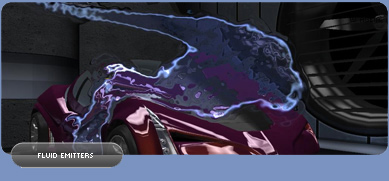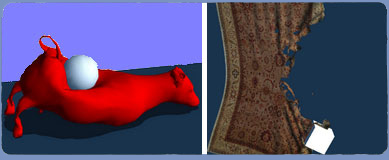Published: September 16, 2008 |
Source:
XFX |
Author:
Rich Weatherstone
XFX 280GTX XXX Edition
PhysX Feature
Â
Way back in 2005, PhysX was set to be ‘the next big thing’ in PC gaming. A dedicated card that could handle complex calculations using unique algorithms was seen as a the leap forward in GPU technology. This advancement would enable the add-on card to take some of the stress from the GPU and CPU by completing these calculation independently, freeing up more bandwidth for the GPU and CPU to do their own thing, thereby granting the user more FPS and perhaps more importantly, true Physics capabilities.
Â
The initial showcase with ‘Bet On Soldier’ was, however, a dire affair and failed to capture gamers and developers imagination. 2006 saw a revised edition hit the shelves and once again, though slightly better recieved this time around, PhysX was ultimately deemed uneccessary. Perhaps the greatest enemy of Physx however was support. Too few titles supported the feature to offset the cost of the card. So how has this changed?
Â
NVidia take control
Despite the perceived failure of PhysX, NVidia sought to acquire Ageia for an estimated $150 million in February of 2008 and in a stroke of genius have now incorporated PhysX processing in there GPU’s so there is no longer a need for a dedicated PPU. If there is one thing that NVidia do well it is marketing. Where PhysX failed before, NVidia will be determined not to make the same mistakes and a rapidly increasing games catalogue of over 150 titles is ensuring PhysX is here to stay. AMD, despite originally classing PhysX a failure have now taken steps to ensure they are not left alone and are working with Havok to create there own PhysX engine to compete with NVidia but at this stage NVidia still hold all the aces.
Â
How does PhysX work?
Games can be generalised into three separate ‘engines’ which make them ‘work’:
-
A game engine is basically the mechanics of the game, ensuring every action you take has a reaction. Press the fire button and your gun should fire, press space to jump and you should jump to a certain height etc. This is the most basic engine (but widely regarded as the most important). The next two components are the two engines that deal with the calculations of such actions, namely the game physics (movements, geometry etc) and the effects physics (sparks, bullet holes, debris).
Â
-
Game physics deal with aspects such as gravity, velocity and movement while this may seem simple enough it is actually a very demanding and resource sapping component of any game and as such these areas are usually trimmed back as far as possible which means that on occasions bizarre things happen that would not happen in real life. Hit a cardboard box with a wrench and it falls to the floor instead of crumpling, jump from a cliff and your speed remains linear. Not exactly the realism you were hoping for huh?Â
Â
-
Effects Physics are those little extras that on occasions are unnoticed but can determine a real environment from a fake one. Take an exploding barrel of kerosene, a favourite in almost every FPS title. The barrel explodes with large shards of metal and flames with only a scorch mark remaining on the wall/floor where it was. PhysX allows the setting of multiple shards of metal, smoke and fog and any debris laying nearby to react to the explosion along with nearby objects becoming involved in the affray. This makes for a greater perception of realism than ever before.
Â
Â
Â
Why integrate with a GPU?
Considering that the whole idea of PhysX was to relieve the stress from GPU’s in the first place, it appears NVidia have gone full circle and now re-integrated PhysX processing back into the GPU. While it may seem strange, this strategy serves three fold. You will no longer need a dedicated PPU to get the PhysX effects therefore games will be more widely supported and GPU’s are the perfect processor to handle the complex calculations required for PhysX. NVidias CUDA based GPU’s are the perfect match for PhysX in that the original PPU from AGEIA had ten cores the NVidia CUDA GPU’s have 128! Not only that but the parallel computations a GPU performs will be much faster than going through a PCI bus back and forth to the GPU.
Â
What games will be supported?
NVidia current supplies all major software developers with a PhysX software developers kit (SDK) so that they can easily and efficiently incorporate PhysX effects into all the major titles. It is also compatible with nearly all the major software development tools and also allows for cross platform compatibility. This is key, as more and more games are being developed on Playstation and Xbox, then ported to PC, so the inclusion of PhysX effect will add that extra polish to any game ported over from the PC’s inferior ‘games machines’.
Â
So, whether you are looking for those extra particles of dust or sparks from metal on stone, Cloth deforming realistically and rag doll effects that need to be seen to be believed, PhysX, on the outset at least, should be on every gamers list. Lets see what happens when we put the XFX 280GTX XXX in action with a few PhysX enabled benchmarks.
Â






